BEADS FROM SRI
LANKA
The Enigmatic Island of Earthly Treasures and Celestial
Mythology
The resplendent island of Sri Lanka has, since
antiquity, been an enigma, with narratives oscillating
between the celestial and the terrestrial. Marco Polo,
the Venetian explorer, hailed it as the possible
location of the original Eden, a terrestrial paradise
brimming with verdant beauty and unspoiled nature. In
stark contrast, Indian mythology paints it as the
stronghold of the Demon King Ravana, transforming the
island into a realm of dark mysteries and untold
legends.
These tales imbue Sri Lanka with an otherworldly aura,
making it a locus of heavenly myth and earthly marvels.
The island's treasures are not confined to its
captivating tales but extend beneath the surface. For
millennia, gem seekers have delved into the depths of
Sri Lanka's rich terrain, unearthing a profusion of
precious stones that glitter with unrivaled allure.
Perhaps the most renowned gemstone from Sri Lanka is the
sapphire. Its deep blue hue mirrors the infinite expanse
of the Sri Lankan sky, a celestial canopy that
seamlessly merges with the terrestrial majesty of the
island. In this sense, Sri Lanka is where the earth and
sky harmoniously unite in a mesmerizing spectacle of
blue, symbolizing the intriguing fusion of terrestrial
and celestial wonders that the island has come to
represent over centuries.
400 year old sapphire beads |
The beads
are for sale
Inquire
through bead ID
for price
|
|
|
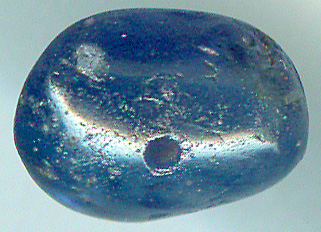
SL 1 - 12 * 9 * 6 mm - SOLD |
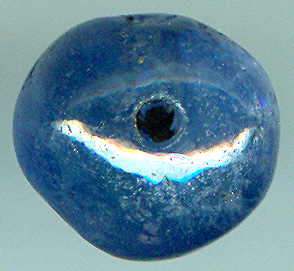
SL 2 - 10 * 10 * 7 mm - SOLD
|
Click on pictures for larger images
|
The pair of aged sapphire beads displayed above
possesses a compelling narrative woven through time.
Many years ago, these unadulterated sapphire beads were
unearthed in proximity to a mine owned by the man who
presented them to me. The uniqueness of his mines is
rooted in their historical lineage - they were, in fact,
repurposed mines, the riches of which had been
substantially exhausted around 400 years ago by the
treasure hunters of the Grand Moghul of India.
The reign of the grand Indian Moghul emperors marked an
unprecedented fervor in the quest for precious stones.
The famed peacock throne of Shah Jehan, the visionary
behind the iconic Taj Mahal, was an embodiment of such
opulence that it outshone the wealth of kings as far as
Europe, reducing them to mere paupers in comparison.
Around the 1600s, treasure seekers from the Moghul court
obtained the consent of the King of Kandy to mine for
precious gems in the area that has been under the
custodianship of my friend's family since antiquity. The
Kandyan king mandated that the Moslem miners must
restore the landscape after their excavation by
refilling the mining pits. Additionally, they were
obligated to present the choicest jewels as an offering
to the revered Hindu deity Kataragama.
The tales of these Moslem gem hunters are still
recounted in local folklore, woven with threads of the
supernatural. Legend has it that they employed a unique
divining tool—a boomerang—to locate the most bountiful
places for gem mining. The boomerang was cast across the
land in specific patterns, and wherever it landed, the
mining commenced. This technique led them to one of the
richest gem-bearing sites in Sri Lanka. Laden with their
unearthed bounty, the Moghul explorers set sail on six
ships back to India.
In accordance with their agreement, they were to offer
one of these vessels to the deity Kataragama. However,
they attempted to deceive the god by scuttling a ship
filled with worthless stones. Infuriated by this
dishonesty, Kataragama cast a devastating storm that
sank the remaining five ships off the coast of India.
To this day, treasure hunters are engaged in a
relentless pursuit to locate these sunken vessels. The
sapphire beads displayed above are believed to have been
crafted from the remnants of the material left by these
ill-fated Mogul miners. They were discovered in the
vicinity of the modern-day mine, a silent testament to a
tale of ambition, deceit, and divine retribution.
A 400 year old fake
I went to several jewelers in Kandy after getting this facetted bluish green bead for a few rupies in a small side street shop. They all confirmed that the bead was made of a precious stone called 'spinel'.
|
|
|
|
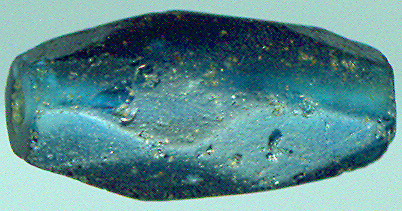
SL 3 - 16 * 8 mm
|
However when I went to the man from which I got the sapphire beads, he as a gemologist with the help of his microscope could confirm that there were several small bubbles of air in the material.
The spinel was fake! This in fact only made the bead even more interesting! The fake was according to the gemologist minimum 400 years old. Since ancient times the Sri Lankan artist were masters in manufacturing almost perfect fake stones like the fake spinel bead displayed above! It even has the precise color and density as a spinel would have. Only in a microscope one is able to see that it is not a real precious spinel stone.
Old glass beads with
sapphire color
|
|
|
|
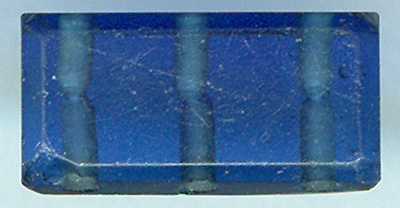
SL 4 - 15 * 7 * 4 mm
|
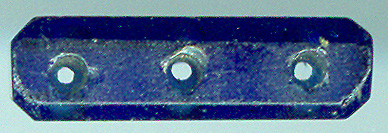 |
It is in fact not surprising that so many old glass beads found on Sri Lanka displays a
magnificent
cobalt blue color. This is the color of the Sri Lankan sapphire!
The blue glass bead above has drilled holes in spite of the fact that it is a glass bead.
And here are some more wonderful
cobalt blue colored glass beads:
|
|
|
|
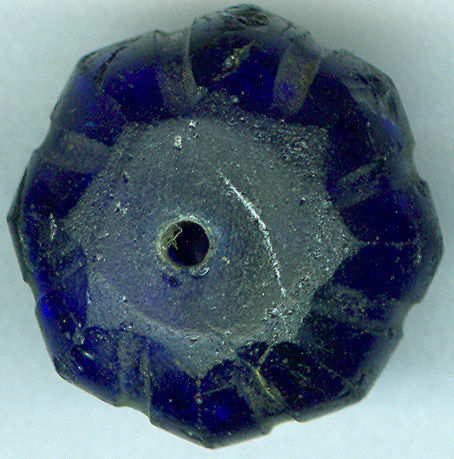
SL 5 - 17 * 14 mm
|
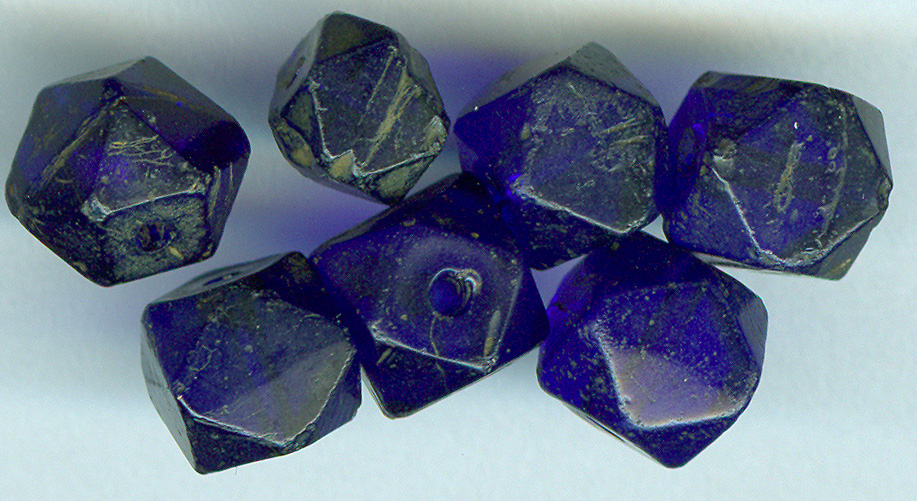
SL 6 - 7 mm |
ANCIENT HINDU BEADS
Sri Lanka is first of all a Singhalese-Buddhist society. However there is a large Tamil-Hindu population, especially in the North of Sri Lanka. This
Hindu culture is as old as the Buddhist culture. Displayed below are some beads from the ancient Sri Lankan Hindu culture:
|
|
|
|
|
This wonderful amethyst bead to the left has been carved like a conch shell. The conch shell symbolizes
Victory. It was used as a war trumpet in ancient times. The small beautiful zoomorphic tortoise bead
to the right is made out of an almost perfect piece of sapphire. The bead is most probably a
Hindu bead since the tortoise is considered an incarnation of the Hindu trinity God Vishnu.
Old Zoomorhic Leopard tooth bead
|
|
|
|
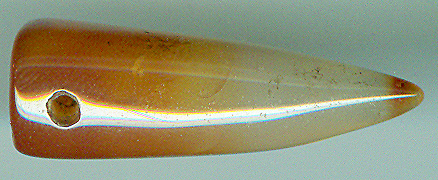
SL 8 - 35 * 11 mm
|
|
This rare and beautiful leopard (or tiger) tooth bead amulet could be from both South India or Sri Lanka. Both
Hindus and Buddhists are just below the surface of their official belief systems animists, who believe in a spirit world where basically everything, like trees, mountains and waterfalls has a spirit. In Sri
Lanka the shamanistic tradition of wearing masks points in the same direction. A leopard tooth bead, like the one displayed above, will give the owner the power and courage of the big cat. Almost everywhere, from Tibet to Sri Lanka, where beads have magic powers, the bead has to be worn directly in contact with the skin. That is why we often observe a special sheen on old beads.
Old Bohra weapon beads from South India
|
|
|
|
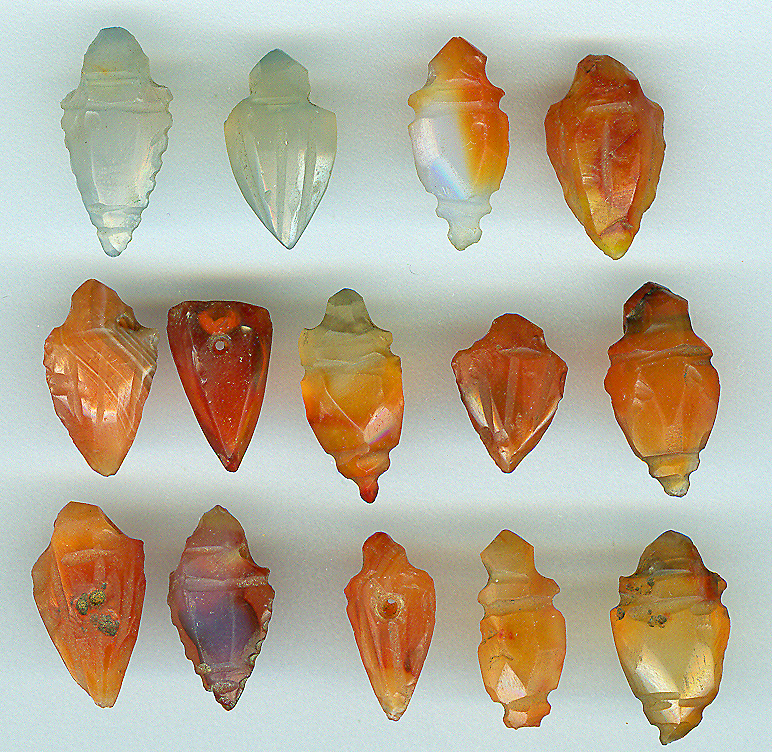
Largest 20 * 13 *6 mm
-
click on image for larger picture
See
Ancient Bead Figures
|
These interesting weapon beads most probably origin from from South India.
They are depicting swords from the south and central Indian
Bohra Muslim culture. The beads are most probably not more than a few hundred years
old.
(The second bead in the second row got in the scan by a mistake.
This bead is ancient.)
Dong Son beads
These beautiful beads bears witness to the fact that beads are great travelers.
It is actually a Dong Son Bead. Sri Lanka has always been a central hub for oceanic
traffic connecting the West with the far East.
|
|
|
|

SL 9 - 45 * 10 mm
|
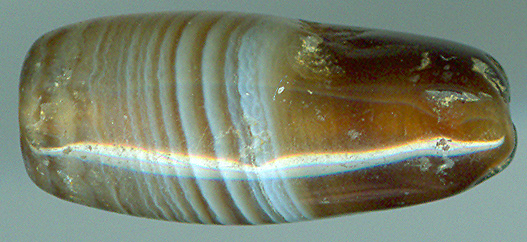
SL 10 - 20 * 8 mm |
Mysterious terra cotta eye bead
This terra cotta eye bead is very old. It could be a
Hindu bead... My guess is that it is a Buddhist bead.
|
|
|
|

SL 11 - 30 * 17 mm
click on images for larger picture
|
This motive is often found on Sri Lanka. Here we can observe the same eye-motive on some ancient glass beads:
|
|
|
|
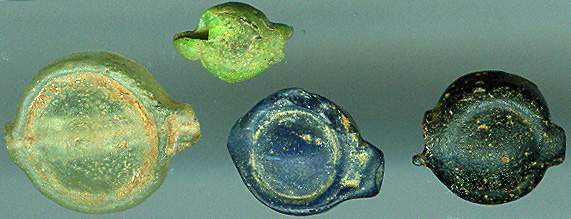
SL 12 - 17 * 14 * 7 mm -
|
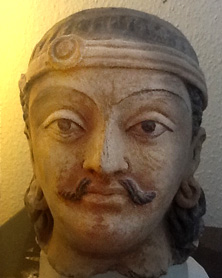 |
|
Displayed to the right you can see the same eye design
on a stucco head of an ancient Indian Buddhist King, maybe Ashoka.
Ancient Turquoise beads
These small turquoise beads displays the attractive, more blue color.
|
|
|
|
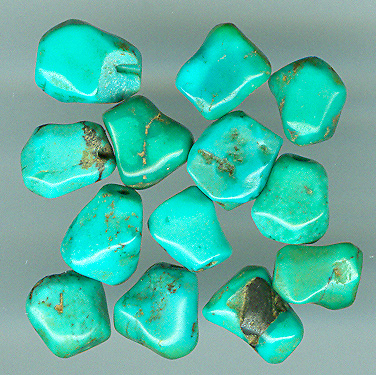
SL 13 - 8 * 4 mm
|
Huge ancient agate bead
This large uncooked agate bead shows great sign of wearing through geneations.
|
|
|
|
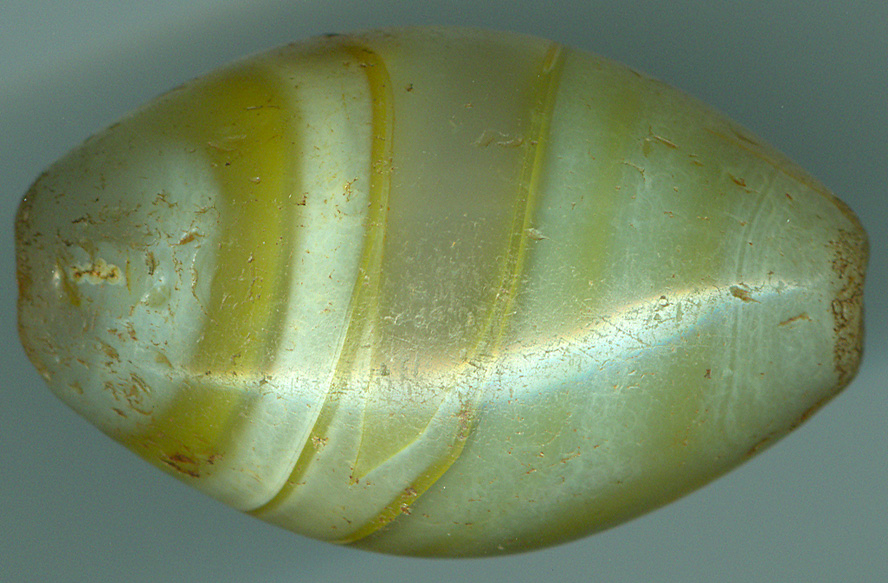
SL 14 - 43 * 24 mm
|
Various glass beads
Old melon beads to the left and a
|
|
|
|
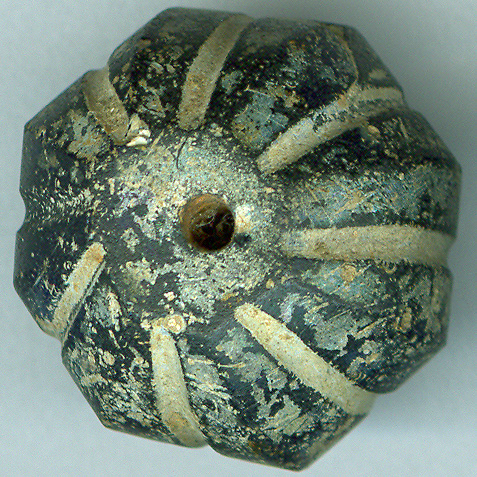
SL 15 - 18 * 16 mm
|
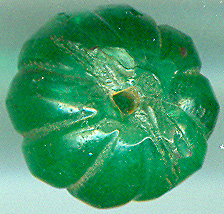
SL 16 - 16 * 18 mm
|
|
|
|
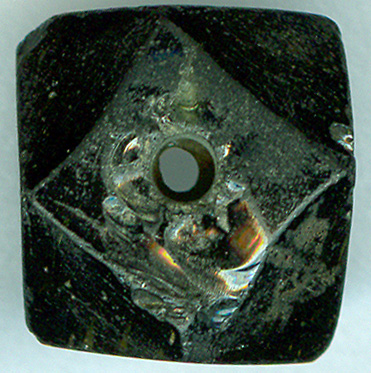
SL 17 - 14 * 9 mm
|
|
|
|
|
|
|
|